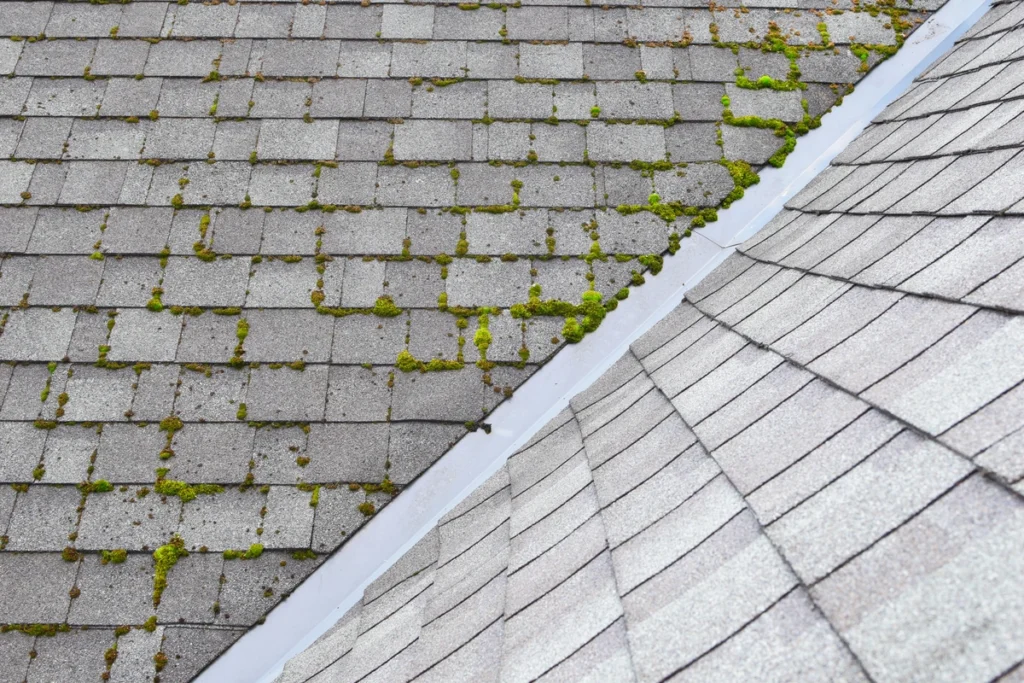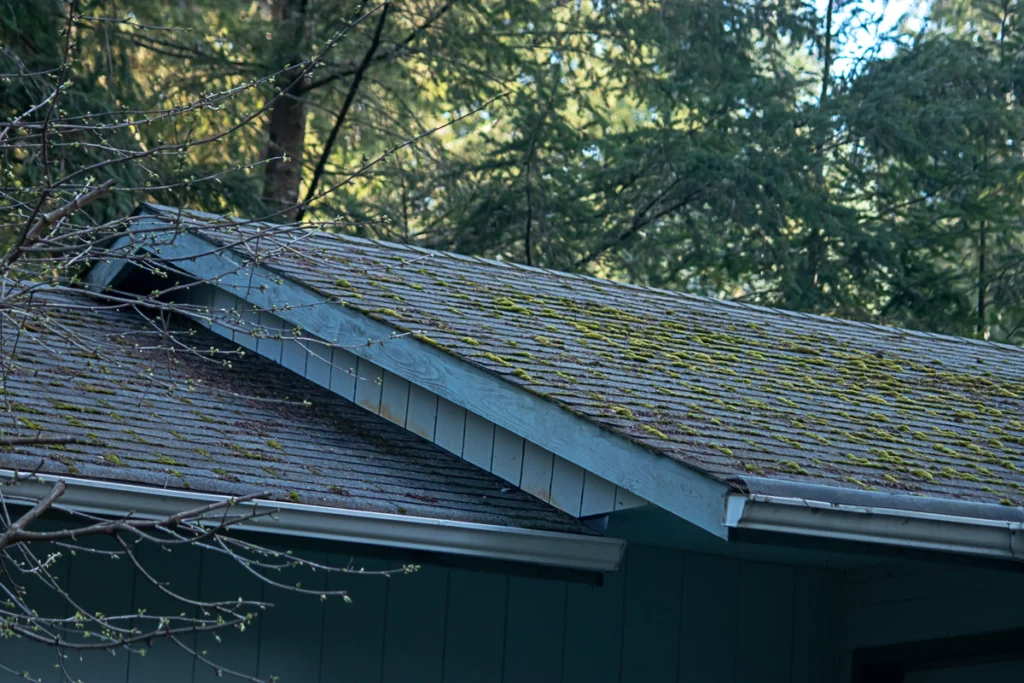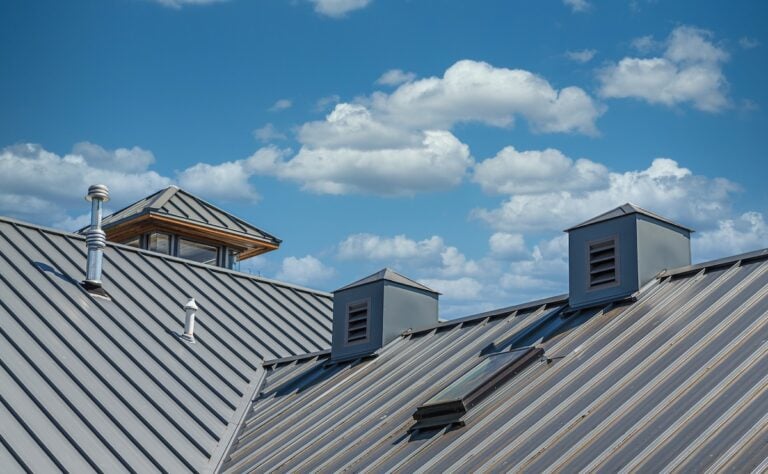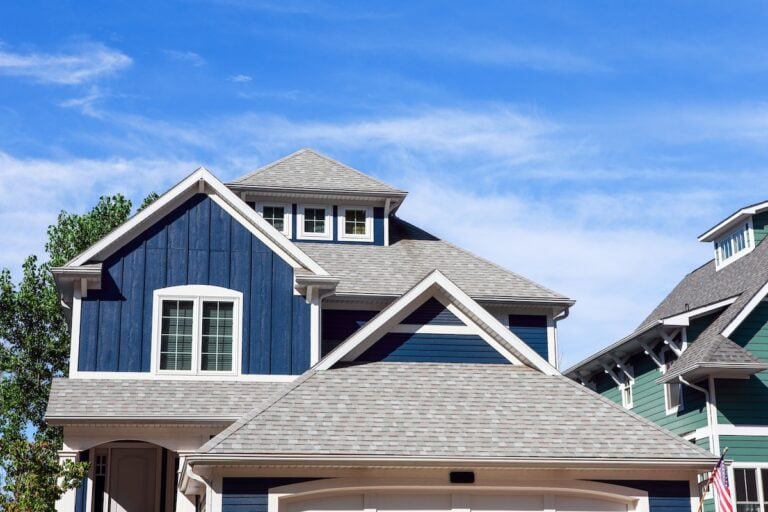Understanding Roof Moss
Before we get into the specifics of timing, it’s essential to understand why moss grows on your roof and the problems it can cause. Moss thrives in damp, shaded environments – making your roof an ideal breeding ground, especially if it’s frequently exposed to moisture and lacks adequate sunlight.
Why Moss is a Problem
- Structural Damage: Moss holds moisture against your roof, which can lead to wood rot and weaken the structural integrity of your roof.
- Shingle Damage: Moss can lift shingles, causing them to become loose and increasing the risk of leaks.
- Aesthetic Issues: A moss-covered roof can detract from your home’s curb appeal and potentially affect property value.
- Increased Maintenance Costs: If left unchecked, moss can lead to significant damage, resulting in costly roof repairs.

Timing is critical when it comes to removing moss from your roof. The ideal time depends on several factors, including climate, weather conditions, and the type of roofing material. However, some general guidelines can help you determine the best time for moss removal.
When is the Best Time to Remove Moss?
🌷 Spring
Spring is an excellent time for roof maintenance, including moss removal. The weather is typically milder, making it easier and safer to work on the roof. Additionally, spring rains can help rinse away moss treatment solutions, ensuring a thorough clean.
- Pros:
- Mild temperatures are ideal for working outdoors.
- Spring rains assist in rinsing off moss treatments.
- Early removal prevents moss from growing and spreading during the wetter months.
- Cons:
- Unpredictable weather may cause delays.
- Wet conditions can make the roof slippery and dangerous.
🌞 Summer
Summer offers warm, dry weather, making it another great time for moss removal. The heat can help kill moss naturally, and treatments tend to be more effective in dry conditions.
- Pros:
- Dry weather ensures moss treatments work effectively.
- Warm temperatures help kill moss and prevent regrowth.
- Longer daylight hours provide more time for maintenance work.
- Cons:
- High temperatures can make outdoor work uncomfortable.
- Moss may already be well-established, requiring more effort to remove.
🍁 Fall
Fall is also a suitable season for moss removal. The cooler temperatures make outdoor work more comfortable, and it’s an excellent time to prepare your roof for the wet winter months ahead.
- Pros:
- Cooler temperatures are ideal for working outdoors.
- Removing moss in fall prepares your roof for winter.
- Less chance of new moss growth before the winter months.
- Cons:
- Falling leaves can make roof cleaning more challenging.
- Shorter daylight hours may limit the time available for maintenance.
❄️ Winter
While winter isn’t the ideal time for roof moss removal, it can sometimes be necessary, especially if the moss growth is severe and causing immediate damage. However, the cold, wet, and potentially icy conditions make it risky.
- Pros:
- Necessary if moss growth is causing immediate damage.
- Cons:
- Dangerous due to cold, wet, and icy conditions.
- Treatments may be less effective in cold weather.
Preparing for Moss Removal

Regardless of the time of year, proper preparation is crucial for successful moss removal. Here are some steps to ensure you’re ready to tackle the task:
Safety First
- Protective Gear: Wear non-slip shoes, gloves, and safety goggles.
- Ladder Safety: Ensure your ladder is stable and placed on a flat surface.
- Buddy System: Have someone nearby in case of an emergency.
Tools and Materials
- Chemical Moss Remover: Choose a product safe for your roofing material.
- Scrub Brush or Soft Broom: Avoid using metal tools that can damage shingles.
- Garden Hose: For rinsing off the moss treatment.
- Plastic Sheeting: To protect plants and landscaping from chemical runoff.
6 Step Moss Removal Process
Ready to get started? Follow these steps for optimal moss removal.
1) Inspect Your Roof:
Before starting, inspect your roof for any damage or loose shingles that may need repair.
2) Apply Moss Treatment:
Choose a dry day with no rain in the forecast. Follow the manufacturer’s instructions for the moss treatment. Apply the treatment evenly across the moss-covered areas.
3) Allow Treatment to Work:
Leave the treatment on for the recommended time, usually a few days to a week. The moss will turn brown and become easier to remove.
4) Remove Dead Moss:
Use a scrub brush or soft broom to gently remove the dead moss. Work from the top of the roof downwards to avoid damaging shingles.
5) Rinse Roof:
Use a garden hose to rinse off any remaining moss and treatment residue. Avoid using a pressure washer, as it can damage your roof.
6) Clean Gutters:
Ensure your gutters are clear of debris to prevent water buildup and damage.

Preventing Future Moss Growth
After successfully removing moss, take steps to prevent it from returning. Here are some quality roofing tips:
Trim Overhanging Branches
Shade and moisture are moss’s best friends. By trimming overhanging branches, you allow more sunlight to reach your roof, reducing the ideal conditions for moss growth.
Regular Roof Inspections
Conduct regular roof inspections to catch moss growth early. Early detection makes removal easier and prevents extensive damage.
Install Zinc or Copper Strips
Zinc or copper strips can be installed along the ridge of your roof. When it rains, small amounts of metal are released, creating an environment where moss cannot thrive.
Keep Gutters Clean
Clean gutters prevent water buildup, which can contribute to moss growth. Regularly remove leaves and debris to ensure proper drainage.
Use Moss-Resistant Roofing Materials
If you’re considering replacing your roof, opt for moss-resistant materials, such as asphalt shingles treated with algaecides.
Prevent Future Moss Growth With Palladium!
Maintaining a moss-free roof is crucial for protecting your home and preserving its value. While spring and summer are generally the best times for moss removal, fall also offers favorable conditions. Regardless of the season, proper preparation, safety measures, and preventive steps can help you keep your roof in top condition.
Ready to take the first step in maintaining a healthy, moss-free roof?
Contact us today to schedule a consultation with one of our roofing experts. We’re here to help you protect your home and enhance its longevity.




